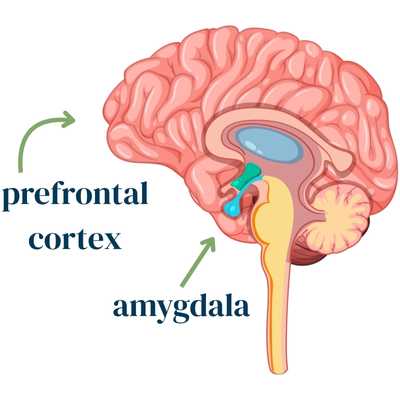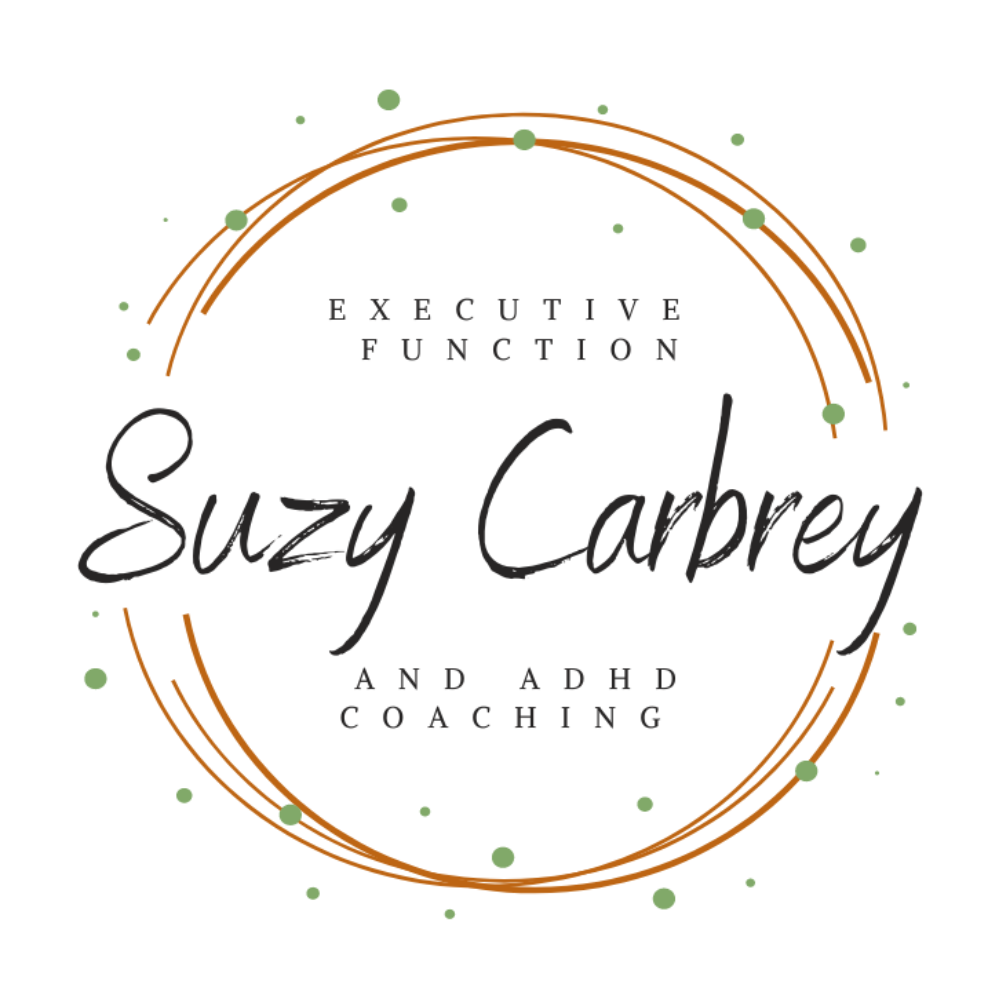Stress and discomfort are unavoidable parts of life. No matter how carefully we plan, unexpected events, big emotions, and tough situations will always show up. For adults with executive functioning challenges, whether related to ADHD, anxiety, or simply how their brain is wired, these moments can feel especially overwhelming. The instinct to avoid, shut down, or react impulsively can take over, leaving you drained and frustrated.
Here’s the truth: building tolerance for stress and discomfort isn’t about “toughing it out” or ignoring your needs. It’s about learning to stay with uncomfortable experiences long enough to respond in ways that align with your goals and values. It’s about reclaiming choice.
In this post, we’ll explore what stress and discomfort tolerance really mean, why they matter for executive functioning, and practical ways to strengthen them. We’ll also look at maladaptive stress, the kind that works against you, and break down how stress and discomfort can each be helpful or harmful depending on how they’re managed.
Stress vs. Discomfort: What’s the Difference?
Stress and discomfort often get lumped together, but they’re not exactly the same thing. Understanding the difference can help you respond more effectively when life feels hard.
- Stress is your body and brain’s response to a demand, challenge, or threat. It’s physiological, your heart rate goes up, your muscles tense, your brain releases stress hormones. Stress can be short-lived (like rushing to make a deadline) or ongoing (like chronic overwhelm).
- Discomfort is the emotional or physical unease you feel in the moment. It might be boredom, frustration, awkwardness, self-doubt, or physical sensations like restlessness. Discomfort doesn’t always trigger a full stress response, but it can still feel unpleasant.
Think of it this way: stress is the system revving up, while discomfort is the feeling of being out of your comfort zone. Sometimes they show up together, like when you’re anxious before a big presentation. Sometimes they’re separate, like when you’re bored in a waiting room (discomfort) versus getting a scary medical bill (stress).
The Double-Edged Sword: When Stress and Discomfort Help—or Hurt
Both stress and discomfort can be adaptive (helpful) or maladaptive (harmful).
- Adaptive stress and discomfort
These experiences push you to grow, motivate you to act, and help you perform better. A little stress before a deadline can sharpen your focus. The discomfort of learning something new signals your brain is growing. Think of them as signals that you’re stretching, not breaking. - Maladaptive stress and discomfort
This happens when stress or discomfort overwhelms your capacity to cope. Instead of motivating you, they paralyze you. Maladaptive stress might look like constant worry, burnout, or physical illness from being in fight-or-flight mode too often. Maladaptive discomfort shows up as avoidance, shame spirals, or believing you “can’t handle” hard things.

The same situation can be adaptive for one person and maladaptive for another, depending on context, history, and support. For example:
- Giving a speech might energize one person (adaptive stress) and completely overwhelm another (maladaptive stress).
- Starting a new routine may feel awkward but doable for one person (adaptive discomfort) and unbearable for another (maladaptive discomfort).
The goal isn’t to eliminate stress or discomfort, but to build enough tolerance so they don’t tip into maladaptive territory.
Why Stress Feels Harder with Executive Functioning Challenges
Executive functioning is the brain’s management system. Skills like working memory, planning, organization, task initiation, and emotional regulation all fall into this category. When these skills are strong, you can pause, think, and choose your response to stressors. When they’re shaky, stress hits harder.
A few reasons why:
- Time blindness and urgency
If it’s hard to see the big picture of time, even small setbacks can feel catastrophic. Stress reactions easily spiral out of proportion. - Emotional intensity
ADHD brains, in particular, often feel emotions more strongly. What someone else might shrug off can feel like a tidal wave to you. - Low frustration tolerance
Tasks can feel harder to start and sustain, creating a cycle of avoidance, shame, and more stress. - Difficulty with self-regulation
When calming down or shifting focus doesn’t come easily, stress lingers longer and feels sharper.
What others may find merely annoying can feel overwhelming to you. That isn’t weakness, it’s wiring. Building tolerance for stress creates more space, so those overwhelming moments don’t derail you.
The Role of Discomfort in Growth
Think of discomfort as the training ground for growth. Every new skill, like learning a language, training for a sport, or building healthier routines, requires stepping into discomfort. The frustration, awkwardness, or unease signals that your brain is stretching beyond its comfort zone.
For adults with executive functioning challenges, discomfort shows up everywhere:
- Sitting through the first minutes of a task before focus “kicks in.”
- Staying steady in a heated conversation.
- Trying a new system when the old one feels familiar, even if it doesn’t work.

Avoiding discomfort may feel good in the short term, but it reinforces the idea that discomfort is unsafe. Over time, this shrinks your capacity to handle challenges. By contrast, practicing tolerance expands it. Research shows that being willing to feel discomfort in service of your values is one of the strongest predictors of growth.
Why Building Stress Tolerance Helps Executive Functioning
Strengthening your ability to handle stress and discomfort benefits executive functioning in powerful ways:
- Improved emotional regulation
You pause, breathe, and ride out emotional waves instead of reacting impulsively. - Greater task initiation
Starting often feels uncomfortable. By tolerating that discomfort, you can begin without waiting for it to feel easy. - Stronger cognitive flexibility
Stress narrows your thinking. Tolerance skills help you pivot instead of shutting down when plans change. - Less avoidance
When discomfort feels less threatening, procrastination loses its grip. - Confidence and self-efficacy
Every time you stay grounded under stress, your brain learns: “I can handle this.”
How Stress Tolerance Works in the Brain
When you face discomfort, your amygdala, the brain’s alarm system, fires signals of danger. If your prefrontal cortex (where executive functioning lives) goes offline, you react impulsively.

Practicing stress tolerance strengthens the bridge between the alarm and the thinking brain. You still feel discomfort, but you also keep access to perspective, problem-solving, and choice. Over time, your brain learns that discomfort is survivable.
Practical Strategies for Building Stress and Discomfort Tolerance
Here are some simple, evidence-based ways to build tolerance:
1. Micro-dose Discomfort
Start small. Expose yourself to mild discomfort and practice staying present.
- Sit with an unfinished task for two minutes before reaching for your phone.
- Delay answering an email by five minutes.
- Take a lukewarm shower for thirty seconds.
2. Name It to Tame It
Labeling emotions reduces their intensity:
- “This is frustration.”
- “I’m overwhelmed, but overwhelm is a feeling, not a fact.”
- “This is just the discomfort of starting.”
3. Grounding Techniques
Calm your nervous system with:
- The 5-4-3-2-1 method (five things you see, four you feel, three you hear, two you smell, one you taste).
- Square breathing: inhale 4, hold 4, exhale 4, hold 4.
- Anchoring touch: one hand on your heart, the other on your belly, and breathe.
4. Shift Your Self-Talk
Replace “This shouldn’t feel this hard” with:
- “This feels uncomfortable because it’s new.”
- “I can do hard things in small steps.”
- “Discomfort isn’t danger.”
5. Build Recovery Routines
Tolerance isn’t about staying stressed all the time. Balance exposure with recovery:
- Take short breaks.
- Move your body to release tension.
- Create calming rituals like tea, stretching, or journaling.
6. Connect with Support
Sometimes you need co-regulation. Talking with a supportive friend, joining a body doubling session, or working with a coach can help your nervous system reset.
Real-Life Applications
Here’s how tolerance plays out in everyday challenges:
- Procrastination
Instead of avoiding the discomfort of starting, you tolerate five minutes of awkwardness. Once you’re in motion, the discomfort fades. - Difficult conversations
You breathe through the heat of the moment and stay present long enough to speak calmly. - Overwhelm
You tolerate the initial wave of anxiety and then choose one small step forward. - Transitions
You sit with the unease of switching gears and discover the new rhythm isn’t as bad as predicted.
Each practice expands your capacity. Stress becomes something to manage, not a wall that stops you.
Why This Matters for Neurodivergent Brains
For neurodivergent adults, stress tolerance isn’t optional; it’s essential. Your brain is already working harder to manage attention, planning, and emotions. Without tolerance skills, everyday stressors multiply into overwhelm. With them, you create the space to use executive functioning skills, problem-solve, and thrive.
Putting It Into Practice
Here’s a simple starter plan:
- Pick one small discomfort you’re willing to face (starting a task, sitting with boredom, delaying a distraction).
- Set a tiny goal of two to five minutes.
- Use a grounding technique while you sit with it.
- Remind yourself: “This is safe. Discomfort isn’t danger.”
- Recover with something soothing afterward.
- Reflect: Did the discomfort fade? Did you survive? What felt easier than expected?
- Repeat. Over time, you’ll notice yourself less reactive, more resilient, and better able to use your executive functioning skills.
Closing Thought
Stress and discomfort aren’t enemies to eliminate. They’re invitations to grow. Adaptive stress sharpens you; adaptive discomfort stretches you. Maladaptive stress and discomfort, however, shrink your world and leave you stuck. The difference lies in your ability to tolerate and respond to them.
By practicing tolerance, you expand your capacity to live intentionally, use your executive functioning skills effectively, and create a life that works with your brain, not against it.
You don’t have to leap into the deep end. Start small, two minutes at a time. Every moment you stay present with discomfort builds resilience, confidence, and freedom.

Learn more with Online Coaching for Executive Functioning / ADHD
Ready to gain control and enhance your executive functioning? As an experienced and compassionate coach, I specialize in providing support for executive functioning and ADHD. To embark on your journey, please reach out to me at 708-264-2899 or email hello@suzycarbrey.com to schedule a FREE 20-minute discovery call consultation.
With a background as a speech-language pathologist, I have a strong foundation in executive functioning coaching. My graduate degree program in SLP placed a significant emphasis on cognition, including executive functions, and I have years of experience in medical rehabilitation, providing cognitive-communication therapy. Additionally, I have completed an ADHD Services Provider certification program, I am Solutions-Focused Brief Therapy Diamond Level 1 certified and I am trained in the Seeing My Time® executive functioning curriculum.
Experience the convenience and effectiveness of online coaching, backed by studies that demonstrate equal results to in-person services. Parents, professionals, and emerging adults love the convenience and privacy of receiving coaching from their own homes.
Whether you reside in Chicago, Milwaukee, Indianapolis, Kansas City, or anywhere else around the globe, I am here to assist you. Schedule your discovery call consultation today, and I eagerly anticipate the opportunity to work with you!
Please note that although I am a certified speech-language pathologist, all services Suzy Carbrey LLC provides are strictly coaching and do not involve clinical evaluation or treatment services. If you require a formal speech therapy evaluation and treatment, please inform me, and I can provide appropriate recommendations.



Thank you
Your blog is a testament to your dedication to your craft. Your commitment to excellence is evident in every aspect of your writing. Thank you for being such a positive influence in the online community.
Thank you!